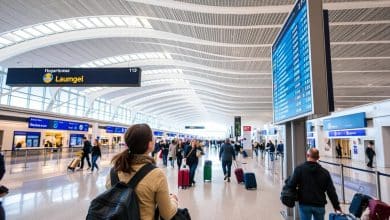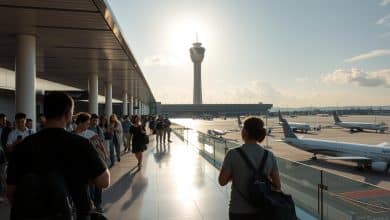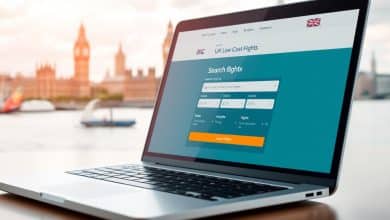Travel Planning for Students: How to Organize an Affordable and Safe Trip
Educational journeys offer young learners life-changing opportunities to grow personally and academically. Studies show these experiences build confidence, foster independence, and strengthen career prospects. Yet coordinating group excursions demands careful organization to balance costs, safety, and learning goals.
Successful trips start with clear objectives. Educators must consider budgets, transportation options, and accommodations that meet safety standards. Digital tools simplify coordination, from comparing flight prices to securing group discounts. Early preparation ensures smoother logistics and better deals.
Collaboration with parents and school administrators remains critical. Transparent communication builds trust while addressing concerns about health protocols or cultural adjustments. Structured itineraries should mix classroom concepts with hands-on activities, creating meaningful connections to real-world scenarios.
Well-designed excursions empower participants to explore new cultures while developing problem-solving skills. Prioritizing affordability doesn’t mean compromising quality—strategic choices like off-season bookings or local partnerships maximize value. The result? Transformative adventures that leave lasting impressions and align with educational priorities.
Understanding the Importance of Student Travel
Exploring new environments offers learners more than just academic growth—it shapes their worldview. Structured trips bridge textbook concepts with practical application, creating memorable learning moments that stick long after returning to the classroom.
Educational and Personal Benefits
Trips transform theories into tangible experiences. Visiting historical destinations helps students grasp complex events, while cultural exchanges improve language skills and empathy. These adventures also spark curiosity about global issues, fostering critical thinking beyond standard lessons.
Personal growth emerges through unexpected challenges. Navigating unfamiliar places builds adaptability, while group activities strengthen teamwork. Over time, participants develop sharper decision-making abilities that benefit both academic projects and daily life.
Building Independence and Confidence
Managing budgets or coordinating schedules during trips teaches responsibility. Many learners discover hidden strengths when solving problems abroad—whether bargaining at markets or navigating public transport systems.
These experiences often become career catalysts. Alumni frequently credit school trips with improving interview performance or workplace creativity. The confidence gained through overcoming travel hurdles translates directly to tackling exams or leadership roles later.
Travel Planning for Students: Strategies and Step-by-Step Tips
Crafting a successful study trip demands early action, clear communication, and meticulous scheduling. Coordinators should begin by mapping out academic objectives and logistical needs simultaneously to create cohesive proposals.
Budgeting and Gaining Necessary Approvals
Develop a comprehensive financial plan covering flights, lodging, meals, and emergency funds. Airlines often release discounted group rates up to 11 months ahead—early inquiries lock in savings. Present detailed cost breakdowns to school boards, emphasizing curriculum connections and safety measures.
Administrators prioritize proposals demonstrating clear learning outcomes. Include risk assessments, medical protocols, and parent consent forms in submission packages. Schedule approval meetings early to address concerns about destination suitability or activity relevance.
Creating a Detailed Itinerary
Reverse-engineer timelines from departure dates. Set milestones for bookings, payments, and pre-trip briefings while allowing buffer weeks for delays. Blend classroom topics with site visits—like analyzing historical events at museums or practicing language skills in markets.
Share draft schedules with educators to verify alignment with academic calendars. Digital tools help visualize daily activities while ensuring balanced time for lessons, exploration, and rest. Finalized plans should include alternative options for weather disruptions or venue closures.
Maximizing Affordability: Flights, Accommodations, and Group Deals
Smart budgeting transforms educational journeys without sacrificing safety or learning value. Coordinators can unlock substantial savings through strategic timing and partnerships while prioritizing supervision standards.
Advantages of Early Booking and Group Rates
Airlines release discounted fares up to 11 months ahead—reserving seats early secures better prices and flight times. Bulk bookings often include perks like free chaperone tickets or flexible payment plans. For example:
- 40-seat blocks typically save 25% versus individual rates
- Off-peak departures reduce accommodation costs by 30-50%
- Pre-negotiated meal packages prevent budget overflows
Utilizing Trusted Tour Management Services
Specialized agencies streamline logistics with destination expertise and pre-vetted lodging. Reputable providers like StudyLink offer:
- Package Travel Directive coverage for refund guarantees
- Safety-audited hostels near key learning sites
- 24/7 emergency support during trips
Educators report 60% less stress when using professional planners. These partnerships also handle last-minute changes, like adjusting room allocations as enrollment shifts.
Leveraging Digital Tools and Itinerary Templates for Efficiency
Modern trip coordination requires more than spreadsheets and email chains. Digital solutions streamline the process, enabling organizers to manage logistics while keeping budgets and schedules visible to all stakeholders.
Visual Planners and Pre-Made Itinerary Templates
Platforms like Holicay simplify route mapping with drag-and-drop interfaces. Organizers can arrange accommodations, meals, and activities on interactive maps, ensuring logical geographical flow. This visual approach minimizes backtracking and maximizes time at educational sites.
Pre-designed templates accelerate planning. Resources from travel blogs or Holicay’s Explore page provide adaptable frameworks. Customization steps include:
- Adding curriculum-aligned museum visits or workshops
- Adjusting timelines for younger age groups
- Integrating local transport schedules
Real-time budget trackers like Splitwise display spending breakdowns through live charts. Coordinators instantly see if food costs exceed projections or if transport savings allow activity upgrades. Mobile access ensures everyone stays updated, even during the trip.
Collaboration features let teachers suggest changes while administrators monitor approvals. Centralized dashboards reduce version conflicts, keeping permission slips and emergency contacts in one accessible hub.
Engaging Students, Parents, and Educators in the Trip Preparation
Building excitement and trust among participants requires strategic outreach and inclusive planning methods. Coordinators must address diverse perspectives while showcasing how excursions align with academic goals and personal growth opportunities.
Effective Communication and Promotional Strategies
Multi-channel campaigns ensure maximum visibility. Colorful posters in hallways catch student attention, while email updates keep parents informed about deadlines and safety protocols. Social media snippets featuring alumni testimonials spark curiosity—“This trip changed how I view global economics” resonates more than generic brochures.
Interactive info sessions bridge gaps between organizers and families. Inviting tour operators to demonstrate emergency procedures eases parental concerns. Teachers from science or art departments can explain cross-subject connections, like studying ecosystems during nature hikes.
Integrating Feedback and Fundraising Ideas
Post-trip surveys reveal what worked and what didn’t. Students might suggest extending museum visits or adding local cuisine experiences. This input shapes future itineraries while fostering ownership among participants.
Creative fundraising empowers learners to contribute. Car wash events or cultural bake sales build teamwork while offsetting costs. Partnering with neighborhood businesses for sponsorships often yields unexpected rewards—a printing shop might donate branded T-shirts for publicity.
Conclusion
Creating impactful educational experiences hinges on structured preparation and teamwork. Coordinators who blend early reservations with professional expertise ensure smooth logistics without breaking budgets. Group discounts and digital organizers help maintain affordability while preserving learning quality.
Effective communication remains vital. Regular updates keep parents reassured about safety measures like emergency protocols. Students gain confidence when involved in fundraising or itinerary feedback—these steps turn passive attendees into engaged contributors.
Successful outcomes rely on balancing three elements: academic goals, cost efficiency, and adaptability. Documenting each trip’s lessons builds stronger future programs. Established partnerships with trusted agencies simplify scaling efforts for larger groups or new destinations.
Ultimately, well-executed journeys empower young minds to connect classroom theories with real-world contexts. They return home equipped with sharper skills and broader perspectives—proof that thoughtful organization creates lifelong opportunities.
FAQ
How can young learners balance costs without compromising safety during trips?
What steps ensure smooth coordination between educators and families?
Which tools simplify organizing multi-destination academic excursions?
Why involve learners in itinerary creation?
How do group rates impact overall trip affordability?
What strategies help secure parental support for excursions?
Are there resources for last-minute itinerary changes?
Published on: 14 de July de 2025

Abiade Martin
Abiade Martin, author of WallStreetBusiness.blog, is a mathematics graduate with a specialization in financial markets. Known for his love of pets and his passion for sharing knowledge, Abiade created the site to provide valuable insights into the complexities of the financial world. His approachable style and dedication to helping others make informed financial decisions make his work accessible to all, whether they're new to finance or seasoned investors.






